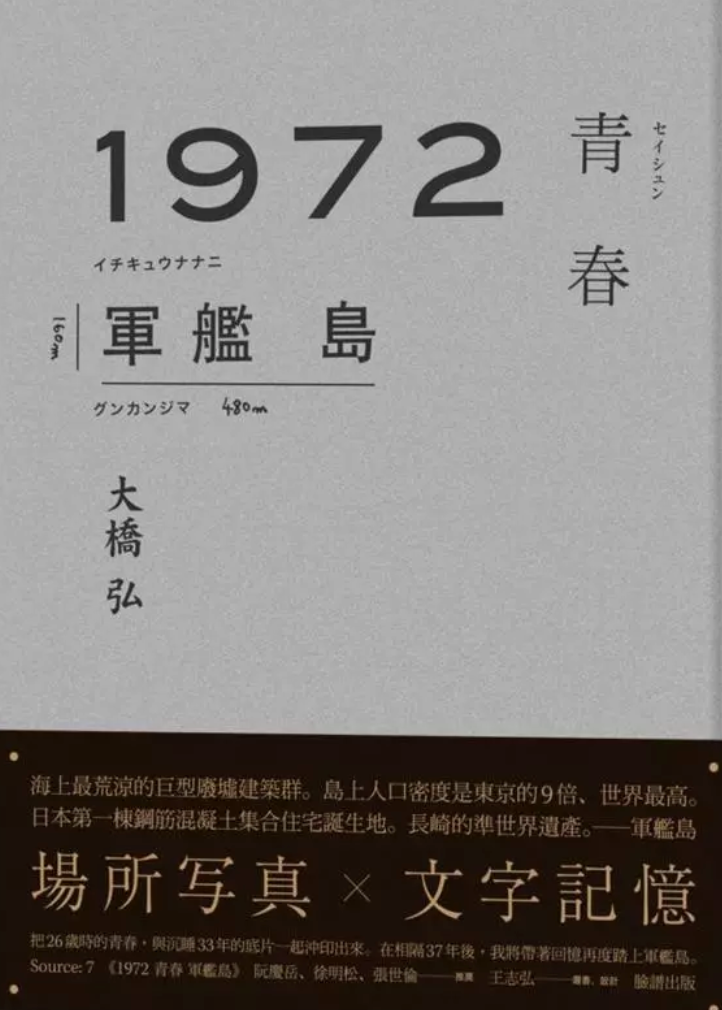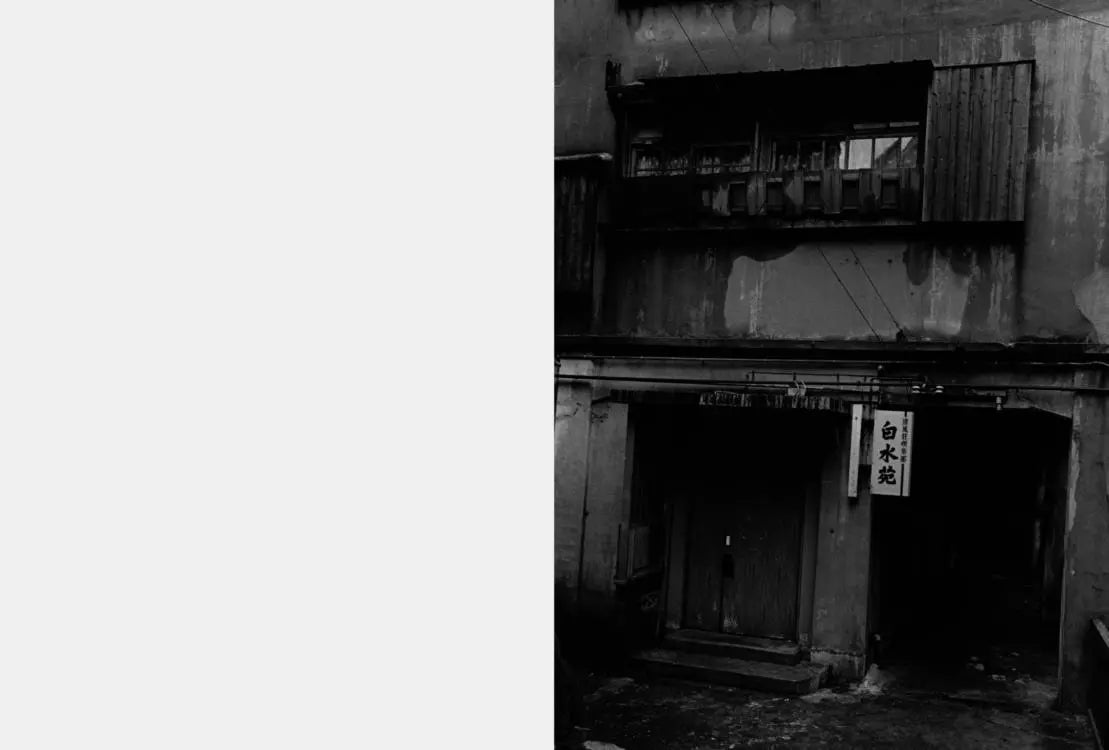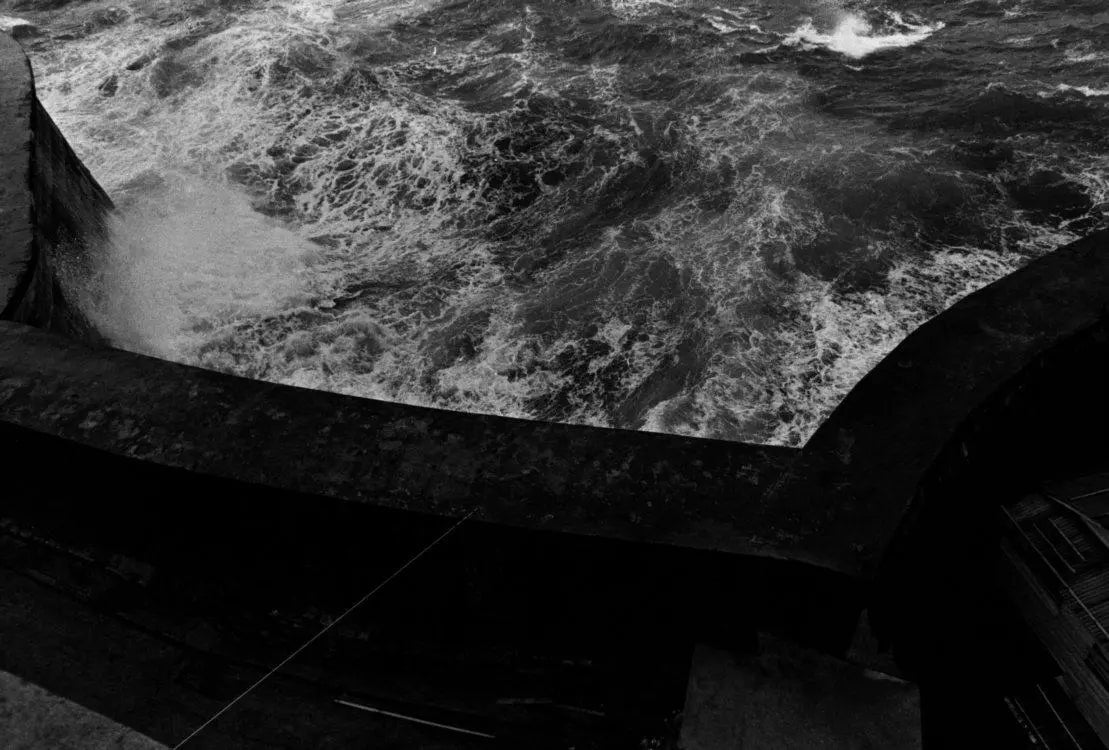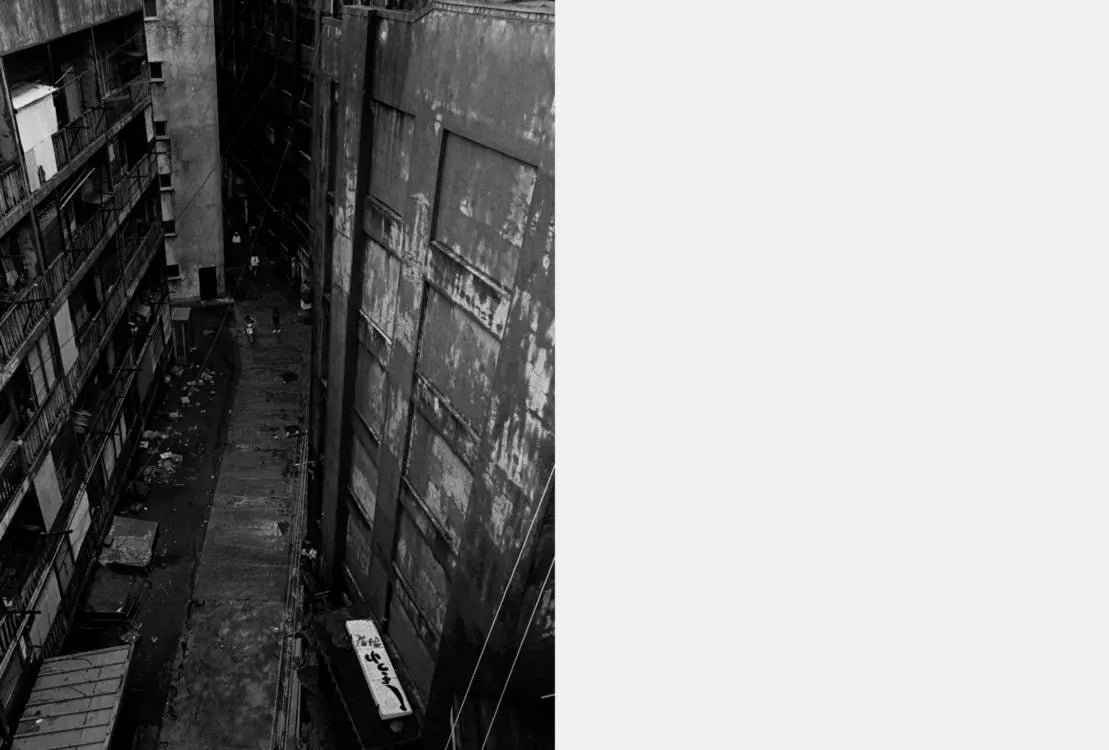1
/
of
4
1972 The Battleship Island of Youth (out of print)
1972 The Battleship Island of Youth (out of print)
Regular price
MOP$200.00
Regular price
Sale price
MOP$200.00
Unit price
/
per
絕版
Couldn't load pickup availability
From the prosperous sea city to the uninhabited island, photos and written memories recreate an important page in history.
1972 Youth Battleship Island
Beautiful and desolate giant ruins building complex on the sea
The birthplace of Japan’s first reinforced concrete housing complex
The population density is 9 times that of Tokyo, the highest in the world
Nagasaki’s quasi-world heritage
Ruan Qingyue, Xu Mingsong, Zhang Shilun strongly recommended Wang Zhihong’s book selection design
Battleship Island, whose real name is "Hashima", is located 18 kilometers off the coast of Nagasaki City. It was named because it resembles the battleship "Tosa". In the early 19th century, it was discovered that the island contained rich coal deposits. In 1890, the Mitsubishi Company took over the mining business. In order to accommodate more manpower and expand production, it carried out multiple land reclamations and competed with the sky. In 191 Six years later, Japan's "first" reinforced concrete housing complex (Building No. 30) was born here, and then a large number of various facilities began to be built on the island, including schools, shopping malls, hospitals, cinemas, etc., making it look like a spectacular maritime city. . In addition to the Japanese, there were also Korean and Chinese prisoners of war. In 1960, the number of residents was as high as 5,267 (nine times higher than Tokyo at that time), making it the highest population density in the world. The coal production here reached its peak in 1941 during World War II, and the abundant mineral resources supported the development of Japanese militarism and post-war economy.
After 1960, the world's energy source shifted from coal to oil. The importance of Gunkanjima gradually declined, and the population continued to migrate out. Mitsubishi officially closed the mining area in early 1974, and the last batch of residents evacuated in April. This became an uninhabited island and began a period of thirty-five years of loneliness. What was once Japan's most advanced maritime city suddenly transformed into a lonely foreign land.
Until 2001, Mitsubishi Corporation transferred Hashima Island to the Nagasaki City Government free of charge. In 2008, Nagasaki passed the "Hashima Access Restriction Ordinance" and submitted a World Heritage application to the United Nations, opening it to general tourists in April of the following year. Landing on land, the mysterious veil of Battleship Island that had been sealed for a long time was unveiled.
Although there is no magnificent sea view or charming white beach, the closed Battleship Island, known as the "Ghost Island", has become the top of the list of ruins that most people want to visit. The movie "Battle Royale 2", 007 "Airborne Crisis" and PS2 The game "Dead Soul 2" was filmed here, and in 2013 Google Map also logged in to explore.
Develop the youth of 26 years old together with the negatives that have been dormant for 32 years
After 37 years, I will set foot on Battleship Island again with memories
One year before Battleship Island was closed, the well-known Japanese photographer Hiroshi Ohashi graduated from photography school. With the money saved from his part-time job, he traveled to Nagasaki with a camera on his back. He wandered to Battleship Island and lived on the island for more than half a year. After returning from the trip, Ohashi Hiroshi only published about five pages of photos in photography magazines, and the rest of the negatives lay in a large suitcase deep in the closet for thirty-two years. In early 2005, he took them out for inspection and found that they were in generally good condition, so he decided to develop all the negatives. Although photos of the ruins of Battleship Island are seen from time to time, there are not many records that completely present the unique appearance of life at that time. Ohashi Hiroshi's "photographs of the place × written memory" can be described as first-hand information, which is extremely precious.
"After entering the darkroom, I went back to when I was twenty-six years old. The negatives were developed one after another, and the scene at that time came to mind. After the darkroom work was finished, I went outside and returned to the real world. The next day I returned to the darkroom , returned to my younger self, and repeated this for several days. It is a strange and happy job to freely travel back and forth between the past and the present. The feature film I shot is to select materials from the current point of view, from the experience I selected about a thousand shots of material that took more than thirty years to mature and made it into a new work. It can be said to be a collaboration between the 26-year-old me and the 59-year-old me."
From a prosperous maritime city to an uninhabited ruin, Battleship Island is like a relic of modern civilization, with epoch-making historical value. Through Ohashi Hiroshi's images and words, we can return to the historical scene and relive its glory.
View full details
1972 Youth Battleship Island
Beautiful and desolate giant ruins building complex on the sea
The birthplace of Japan’s first reinforced concrete housing complex
The population density is 9 times that of Tokyo, the highest in the world
Nagasaki’s quasi-world heritage
Ruan Qingyue, Xu Mingsong, Zhang Shilun strongly recommended Wang Zhihong’s book selection design
Battleship Island, whose real name is "Hashima", is located 18 kilometers off the coast of Nagasaki City. It was named because it resembles the battleship "Tosa". In the early 19th century, it was discovered that the island contained rich coal deposits. In 1890, the Mitsubishi Company took over the mining business. In order to accommodate more manpower and expand production, it carried out multiple land reclamations and competed with the sky. In 191 Six years later, Japan's "first" reinforced concrete housing complex (Building No. 30) was born here, and then a large number of various facilities began to be built on the island, including schools, shopping malls, hospitals, cinemas, etc., making it look like a spectacular maritime city. . In addition to the Japanese, there were also Korean and Chinese prisoners of war. In 1960, the number of residents was as high as 5,267 (nine times higher than Tokyo at that time), making it the highest population density in the world. The coal production here reached its peak in 1941 during World War II, and the abundant mineral resources supported the development of Japanese militarism and post-war economy.
After 1960, the world's energy source shifted from coal to oil. The importance of Gunkanjima gradually declined, and the population continued to migrate out. Mitsubishi officially closed the mining area in early 1974, and the last batch of residents evacuated in April. This became an uninhabited island and began a period of thirty-five years of loneliness. What was once Japan's most advanced maritime city suddenly transformed into a lonely foreign land.
Until 2001, Mitsubishi Corporation transferred Hashima Island to the Nagasaki City Government free of charge. In 2008, Nagasaki passed the "Hashima Access Restriction Ordinance" and submitted a World Heritage application to the United Nations, opening it to general tourists in April of the following year. Landing on land, the mysterious veil of Battleship Island that had been sealed for a long time was unveiled.
Although there is no magnificent sea view or charming white beach, the closed Battleship Island, known as the "Ghost Island", has become the top of the list of ruins that most people want to visit. The movie "Battle Royale 2", 007 "Airborne Crisis" and PS2 The game "Dead Soul 2" was filmed here, and in 2013 Google Map also logged in to explore.
Develop the youth of 26 years old together with the negatives that have been dormant for 32 years
After 37 years, I will set foot on Battleship Island again with memories
One year before Battleship Island was closed, the well-known Japanese photographer Hiroshi Ohashi graduated from photography school. With the money saved from his part-time job, he traveled to Nagasaki with a camera on his back. He wandered to Battleship Island and lived on the island for more than half a year. After returning from the trip, Ohashi Hiroshi only published about five pages of photos in photography magazines, and the rest of the negatives lay in a large suitcase deep in the closet for thirty-two years. In early 2005, he took them out for inspection and found that they were in generally good condition, so he decided to develop all the negatives. Although photos of the ruins of Battleship Island are seen from time to time, there are not many records that completely present the unique appearance of life at that time. Ohashi Hiroshi's "photographs of the place × written memory" can be described as first-hand information, which is extremely precious.
"After entering the darkroom, I went back to when I was twenty-six years old. The negatives were developed one after another, and the scene at that time came to mind. After the darkroom work was finished, I went outside and returned to the real world. The next day I returned to the darkroom , returned to my younger self, and repeated this for several days. It is a strange and happy job to freely travel back and forth between the past and the present. The feature film I shot is to select materials from the current point of view, from the experience I selected about a thousand shots of material that took more than thirty years to mature and made it into a new work. It can be said to be a collaboration between the 26-year-old me and the 59-year-old me."
From a prosperous maritime city to an uninhabited ruin, Battleship Island is like a relic of modern civilization, with epoch-making historical value. Through Ohashi Hiroshi's images and words, we can return to the historical scene and relive its glory.








